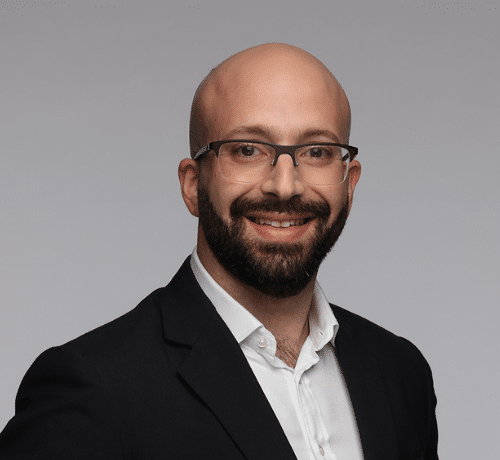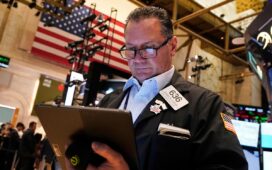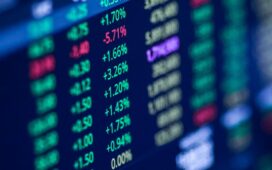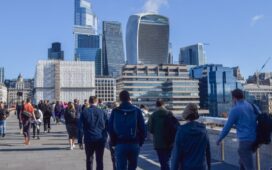By Medan Gabbay, Co-CEO, Quod Financial
There is a quiet but inevitable divide forming among financial markets’ participants.

On one side are those firms that are clinging onto their familiar, manual workflows. Old screens and legacy systems that haven’t changed meaningfully in decades. These firms often reassure themselves with phrases like “but, it still works” or “well, we’re just not ready for AI yet.” For many, that comfort is enough. Perhaps these folks are nearing retirement. Perhaps they believe they can manage just a few more laps around the trading racetrack, before someone else must deal with the inevitable changes facing all of us in this industry.
But on the other side is a newer, very different breed of firm built from the ground up around code, data, and automation. Firms like Qube and others are reshaping the very fabric of trading. Not through marginal upgrades, but through fundamental architectural redesign. They’re not just trading more efficiently, they are redefining what it actually means to trade.
And in between? Most of the industry. Stuck. Waiting. Watching. Hoping.
The Illusion of Stability
Legacy technology has become a prison for many institutions. Not just because the systems are outdated—but because the vendors who run them have little motivation to modernize. In some cases, integration with new technologies is treated as a threat. APIs are restricted, data models are closed, and innovation is deferred unless clients can make enough noise.
But here’s the problem: the clients often don’t push. Whether due to internal complexity, regulatory fears, or plain inertia, many firms have settled into a cycle of stagnation. The result is a dangerous doom loop: low internal momentum meets low vendor ambition, and the outcome is predictable—nothing.
In the meantime, firms who were once dominant are being acquired or slowly phased out. They’re not failing spectacularly. They’re being quietly outpaced by those who move faster, who build natively in the cloud, who treat trading architecture as a competitive advantage rather than an operational necessity.
Hybrid Is the Bridge
The future isn’t fully manual but it isn’t fully autonomous either.
The future is hybrid.
Hybrid trading infrastructure combines the reality of today’s workflows—manual bookings, RFQs, high-touch / care—with the potential of tomorrow: accessible APIs, AI-driven suggestions, automated data capture, and intelligent routing.
This is the only practical way forward for all firms. It allows them to preserve and leverage their institutional knowledge while still opening the door to innovation. And it’s only possible if your core trading system is both mature and open.
That’s a rare combination. Most “modern” platforms lack the depth of functionality required to support global, production-grade trading across asset classes. Most “legacy” platforms were never built for open data access or flexible integration.
Quod’s Position in This Shift
Quod Financial is one of the few remaining independent technology providers still innovating at both ends of this spectrum.
We provide a full-stack, production-ready OEMS for high-touch and low-touch trading, algo execution, middle-office workflows, and regulatory controls. But critically, we’ve designed Quod to be modular, API-first, and data-centric from day one.
This is not accidental. It’s the result of choosing to remain agile, free from the weight of outside investors or platform entrenchment. Our infrastructure is built not just to deliver today’s workflows, but to unlock tomorrow’s innovation—from AI-driven analytics to adaptive order strategies.
We’re not here to replace humans. We’re here to give them better tools, faster information, and a smarter decision-making environment.
The Legacy You Leave
Not every firm will survive this transition. And that’s okay. Some are comfortable fading out quietly, doing things as they always have, with no desire to reinvent. But others—especially those with next gen traders, quants, and technologists—are looking for more.
They want to build, evolve, and lead.
If you are in a position of leadership—whether on the desk, in IT, or at the executive table—you have a choice. You can resist change, or you can embrace it. You can settle for “good enough,” or you can lay the foundation for a firm that thrives in the next era.
As one trader recently told us: “I’m not afraid of change because I’m too old to care if I get fired.” That’s the kind of freedom we need. Not fear-based decision-making—but bold, entrepreneurial thinking.
Let’s stop trying to preserve old structures and start building new ones—modular, flexible, hybrid, and open.
Evolution is not optional. It’s already happening. The only real question is whether you’ll be part of it. You may also find value in our previous articles published in Traders Magazine: [“Adapt to Survive – How Modular Deployment is Transforming Legacy Systems” (Feb 19, 2025)] or [“Why Your Trading System Is Costing You More Than You Think?” (Feb 5, 2025)], a candid look at the hidden operational and opportunity costs of legacy platforms.





